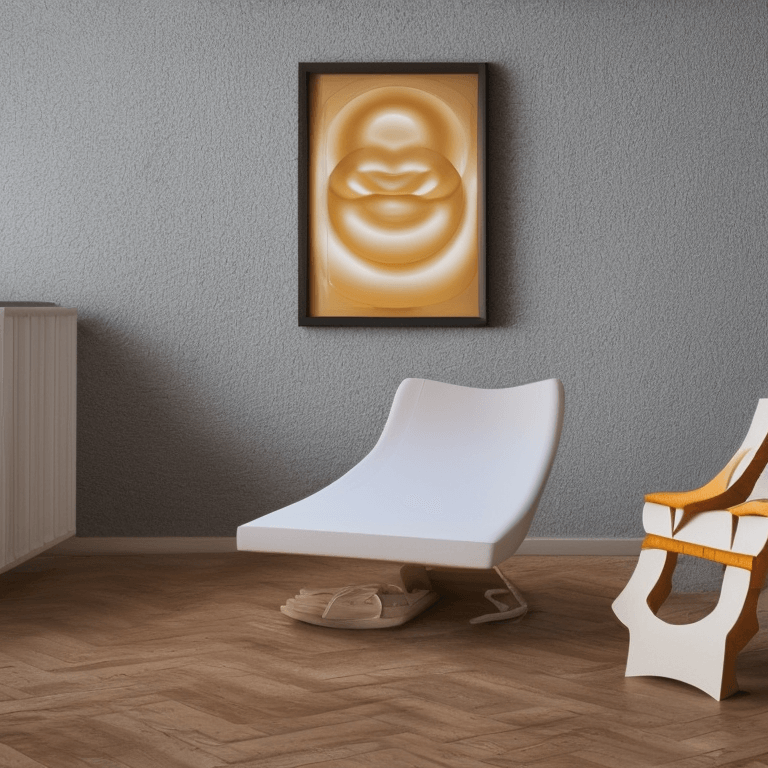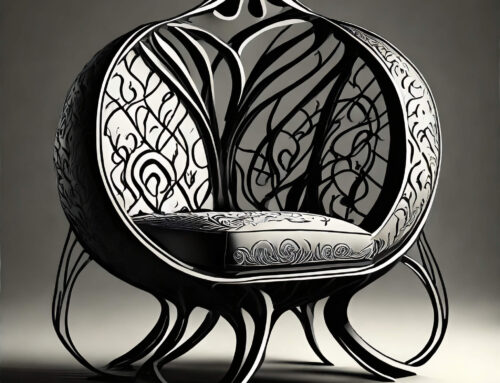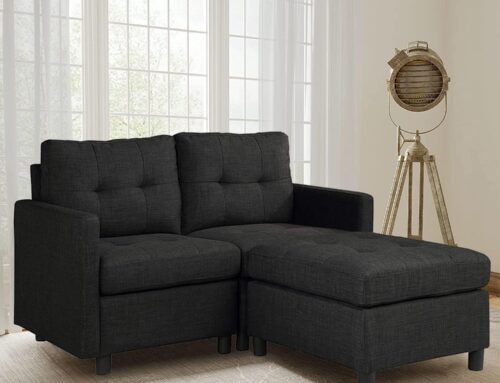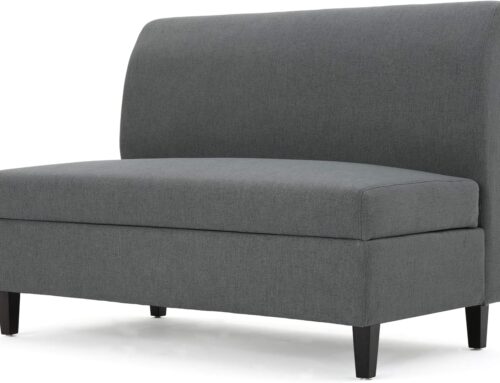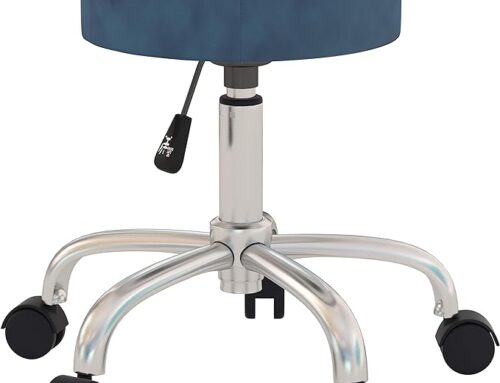Types of Chairs and Beyond
Seating is not merely a functional necessity; it’s an art form that combines design, comfort, and purpose. Whether you’re furnishing your home, office, or any space in between, understanding the diverse array of seating options available can help you make the right choice. In this comprehensive guide, we’ll delve into the world of chairs, sofas, stools, cuddle chairs, chaises, and various other types of furniture used for sitting, providing you with an in-depth look at each category.
1. Chairs
Chairs are the backbone of any seating arrangement. They come in countless styles, each tailored to specific needs and design preferences. Here are some common types of chairs:
- Dining Chairs: Designed for use at dining tables, these chairs offer a balance between comfort and style.
- Accent Chairs: These are decorative pieces that add flair to a room. They come in various shapes, colors, and materials.
- Armchairs: Armchairs feature armrests and are often used as standalone pieces or to complement a larger seating arrangement.
- Wingback Chairs: Known for their high, wing-shaped backrests, these chairs exude elegance and provide extra comfort and support.
- Recliners: Perfect for relaxation, recliners allow you to kick back and unwind. They often have a footrest and can be adjusted for different sitting positions.
- Occasional Chairs: These are versatile chairs used on an as-needed basis and can serve various functions in different rooms.
2. Sofas
Sofas are the centerpiece of living rooms, providing ample seating for family and guests. Various types of sofas cater to different tastes and lifestyles:
- Sectional Sofas: Ideal for large spaces, these sofas can be customized to fit the room’s layout and offer extensive seating.
- Chesterfield Sofas: Known for their deep button-tufted upholstery and rolled arms, Chesterfields are classic and elegant.
- Sleeper Sofas: These sofas double as beds, making them perfect for overnight guests or small living spaces.
- Mid-Century Modern Sofas: Inspired by the design aesthetics of the mid-20th century, these sofas feature clean lines and minimalistic designs.
3. Stools
Stools are versatile seating options that come in various forms, heights, and materials. They are commonly used in kitchens, bars, and other communal spaces. Types of stools include:
- Bar Stools: Designed for elevated surfaces like bar counters, these stools come in different heights to suit various needs.
- Counter Stools: Similar to bar stools, but with shorter heights, they are suitable for kitchen islands and counters.
- Adjustable Stools: These stools allow users to change their height, making them adaptable to different seating situations.
4. Cuddle Chairs
Cuddle chairs, also known as love seats, snuggle chairs, or two-seater chairs, offer an intimate and cozy seating experience for couples or close friends. They come in various styles, armless, loveseat with chaise, from traditional to contemporary, and are perfect for creating a warm and inviting atmosphere.
5. Chaises
Chaises, short for chaise lounges, combine the comfort of a sofa with the relaxation of a recliner. They are perfect for lounging and often have an elongated shape, allowing you to stretch out and unwind.
Tantric chaise or tantra chair are recent addition to this range with a more intimate experience.
6. Other Furniture for Sitting Purposes
Beyond traditional chairs and sofas, there are various other types of furniture used for sitting, including:
- Bean Bags: Casual and comfortable, bean bags are perfect for informal seating in playrooms, home theaters, or outdoor spaces.
- Bench Seating: Benches come in various lengths and styles and are often used in entryways, gardens, or as additional seating at dining tables.
- Rocking Chairs: These chairs provide a soothing rocking motion and are commonly used in nurseries and on porches.
- Ottomans and Poufs: These versatile pieces can serve as footrests, extra seating, or even as small tables when topped with a tray.
- Folding Chairs: Ideal for temporary seating, folding chairs are easily storable and portable, making them great for events and gatherings.
In conclusion, the world of seating is diverse and multifaceted, offering a wide range of options to suit your preferences, needs, and interior design style. Whether you’re looking for the perfect chair, a stylish sofa, a cozy cuddle chair, or any other piece of furniture for sitting, there’s an abundance of choices to explore. Finding the right seating can transform your space into a comfortable and inviting environment that reflects your unique style and personality.
7. Chairs for Outdoor Seating
Outdoor spaces also benefit from a variety of seating options to enjoy the fresh air and beautiful surroundings:
- Adirondack Chairs: These classic, wide-arm chairs are perfect for relaxing on the porch or by the pool.
- Hammock Chairs: Hang from a frame or tree branch and provide a swinging and relaxing seating experience.
- Outdoor Lounge Chairs: Designed for patio or poolside use, these chairs are often made of weather-resistant materials.
- Director’s Chairs: Folding and portable, director’s chairs are commonly used on camping trips or as temporary outdoor seating.
8. Floor Seating
For a more relaxed and informal seating experience, floor seating options can add a touch of cultural diversity and comfort to your living space:
- Floor Pillows: Large, soft cushions that provide a cozy and versatile seating option.
- Poufs and Floor Cushions: These low, soft seating options are perfect for creating a relaxed and laid-back atmosphere.
- Floor Chairs: These lightweight, portable chairs allow you to sit comfortably on the floor without straining your back.
9. Banquettes and Nooks
Banquettes and nooks are built-in or freestanding seating options that are commonly used in dining areas and kitchens. They often feature cushions or upholstery for added comfort.
10. Ergonomic and Task Chairs
Ergonomic and task chairs are designed for comfort and support during extended periods of sitting, making them ideal for home offices, workspaces, and study areas.
- Ergonomic Office Chairs: These chairs are designed to promote good posture and reduce strain during long hours of work.
- Task Chairs: More compact than traditional office chairs, task chairs are suitable for desks and computer workstations.
11. Office Chairs
Office chairs come in a variety of types, each designed to meet specific needs in the workplace. Here are different types of office chairs:
- Task Chairs: Task chairs are versatile and commonly used in office settings. They offer basic ergonomic support and are typically adjustable in terms of height and sometimes tilt. They are ideal for computer workstations and desks.
- Executive Chairs: Executive chairs are larger, more comfortable, and often have high-back designs. They are well-padded and may feature leather upholstery. These chairs are typically used by managers and executives.
- Ergonomic Chairs: Ergonomic chairs are designed with a focus on comfort and proper body support. They have various adjustments for lumbar support, seat depth, armrests, and tilt, promoting healthy sitting posture and reducing the risk of musculoskeletal issues.
- Conference Chairs: Conference chairs are typically used in meeting rooms and boardrooms. They are often designed with a more traditional, elegant appearance and may or may not have casters.
- Guest Chairs: Guest chairs are used in reception areas or as seating for visitors. They come in various styles, including stacking chairs, side chairs, and armchairs, and are designed for short-term sitting.
- Mesh Chairs: Mesh chairs have seats and backs made of a breathable mesh material. They are known for their excellent ventilation and comfort, making them suitable for warm environments.
- Drafting Chairs: Drafting chairs are designed for use with drafting tables or standing desks. They feature extended height ranges, footrests, and ergonomic features to accommodate elevated work surfaces.
- Kneeling Chairs: Kneeling chairs promote an open hip angle and can help alleviate lower back strain. They feature a sloped seat and knee pads for support.
- Ball Chairs: Ball chairs have an exercise or stability ball as a seat. They encourage active sitting and engage core muscles, promoting posture and reducing sedentary behavior.
- Balance Stools: Balance stools are similar to ball chairs but with a flat base. They allow for movement and promote active sitting, helping to relieve discomfort from prolonged sitting.
- Big and Tall Chairs: Big and tall chairs are designed for individuals with larger frames. They offer enhanced support and durability to accommodate increased weight capacity.
- Gaming Chairs: While primarily designed for gamers, these chairs offer ergonomic features, bold designs, and extra padding, making them increasingly popular for office use, especially among those who spend long hours at the computer.
- Reclining Chairs: Reclining office chairs have the ability to recline partially or fully, providing an opportunity for short breaks and relaxation during the workday.
- Guest Chairs: Guest chairs come in various styles, including stacking chairs, side chairs, and armchairs, and are designed for short-term sitting in reception areas or meeting spaces.
- Collaborative Chairs: Collaborative chairs are designed for collaborative workspaces and may include features like swivel bases, casters, and built-in tables.
- Backless office chairs: convenient for short session and space saving
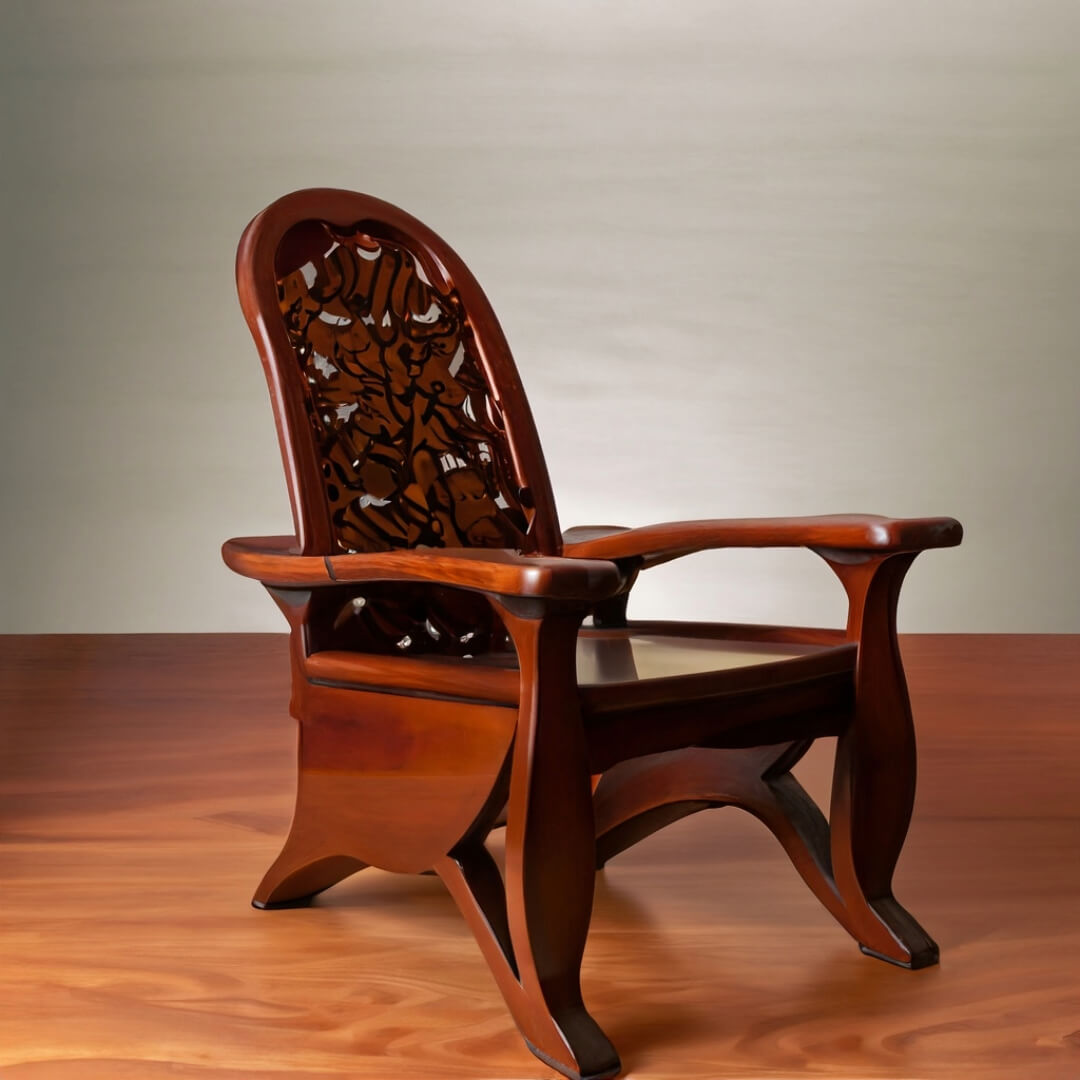
A wooden chair, a timeless classic in the world of furniture, epitomizes the marriage of form and function. Crafted from various types of wood, these chairs showcase the natural beauty of wood grains, offering an inviting and warm aesthetic that seamlessly complements a wide range of interior designs. Whether it’s a sleek and modern design or a traditional piece with intricate detailing, wooden chairs exude durability, sophistication, and a connection to nature, making them a popular choice for homes, offices, and various settings, where they serve both practical and aesthetic purposes.
A yoga chair, also known as an Iyengar yoga chair or a yoga prop, is a specialized piece of equipment that plays a pivotal role in yoga practice. It features a sturdy frame with a flat platform, and it often includes handles for added stability. This versatile chair serves as a valuable aid in achieving yoga poses, offering support and balance during a variety of postures, stretches, and inversions. With its design tailored to facilitate alignment and enhance flexibility, the yoga chair is an indispensable tool for both beginners and seasoned yogis, allowing them to explore their practice with greater confidence and precision.
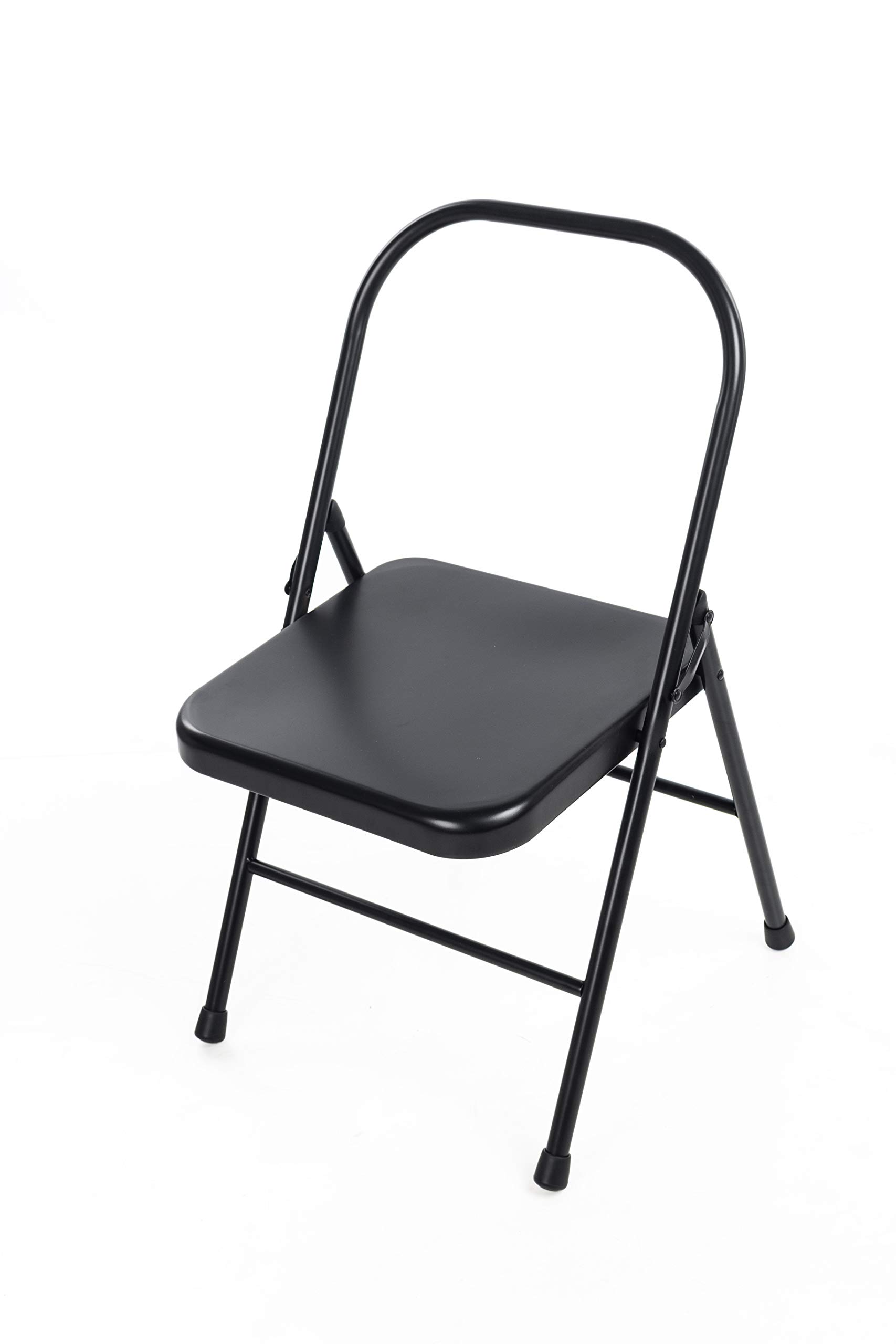
Practical Tips and Buying Guides for Seating Furniture
Choosing the perfect seating furniture is more than just picking a chair or sofa that matches your decor; it’s about finding comfortable and functional pieces that suit your lifestyle. Whether you’re furnishing your home, office, or outdoor space, these practical tips and buying guides for chairs, sofas, chaises, stools, and other seating items will help you make informed decisions while enhancing the value of your investment.
1. Chairs
Consider Comfort and Ergonomics
- Opt for chairs with proper lumbar support if you’ll be using them for extended periods.
- Test the chair’s seat height to ensure your feet are flat on the ground and your knees are at a 90-degree angle.
- Armrests can enhance comfort, but make sure they allow your arms to rest naturally.
Materials Matter
- Wood, metal, and plastic are common chair frame materials. Wood offers a classic look, while metal and plastic are often more modern.
- Upholstery fabrics vary, from leather for sophistication to microfiber for easy cleaning.
Size and Scale
- Measure your space before selecting a chair. Ensure it fits without overwhelming the room or leaving it feeling cramped.
- Consider the chair’s scale in relation to other furniture. It should harmonize with the surrounding pieces.
2. Sofas
Size and Configuration
- Measure the dimensions of your room to determine the size and configuration of your sofa.
- Consider a sectional sofa for large spaces and open floor plans, and compact two-seater sofas for smaller areas.
Frame Quality
- Inspect the sofa’s frame for durability. Hardwood frames are generally sturdier and more long-lasting than softwood alternatives.
Upholstery Choices
- Choose upholstery fabrics based on your lifestyle. Leather is luxurious but requires more maintenance, while microfiber is durable and stain-resistant.
3. Chaises
Lounge in Comfort
- Look for chaises with ergonomic designs that offer maximum comfort for extended lounging.
- Consider options with adjustable backrests to customize your seating position.
Space Considerations
- Measure the available space to ensure the chaise fits comfortably in your room without overcrowding it.
- Explore chaises with storage compartments for added functionality in smaller spaces.
4. Stools
Height Matters
- Measure the counter or bar height before purchasing stools to ensure they are the appropriate height.
- Swivel stools offer ease of movement, which can be convenient for busy kitchens or entertainment areas.
Material Selection
- Choose stool materials that match your decor and are easy to maintain. Metal, wood, and upholstered stools are common options.
Backrest or No Backrest?
- Decide whether you prefer stools with or without backrests. Backless stools are space-saving, while stools with backrests offer additional support.
5. Other Seating Items
Functionality First
- For floor seating items like cushions and poufs, prioritize their functionality and ease of storage when not in use.
DIY and Customization
- Consider DIY projects to create unique seating solutions that reflect your personal style.
- Customize your outdoor seating with cushions, pillows, and throws to add comfort and personality.
Maintain and Rotate
- Rotate cushions and pillows regularly to distribute wear and maintain their appearance.
- Follow manufacturer guidelines for cleaning and maintenance to prolong the life of your seating items.
By following these practical tips and buying guides, you can confidently select seating furniture that suits your space, style, and comfort preferences. Your investment in quality seating will not only enhance your living spaces but also provide long-lasting value and enjoyment.

